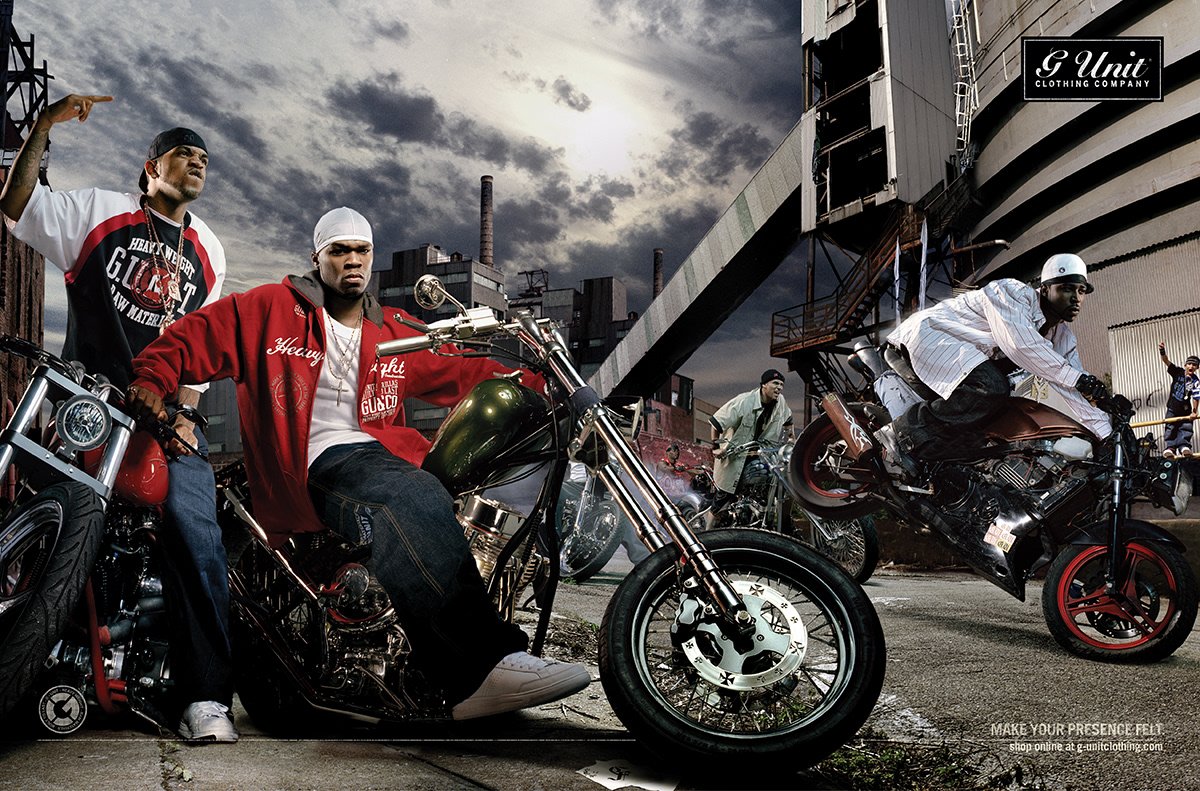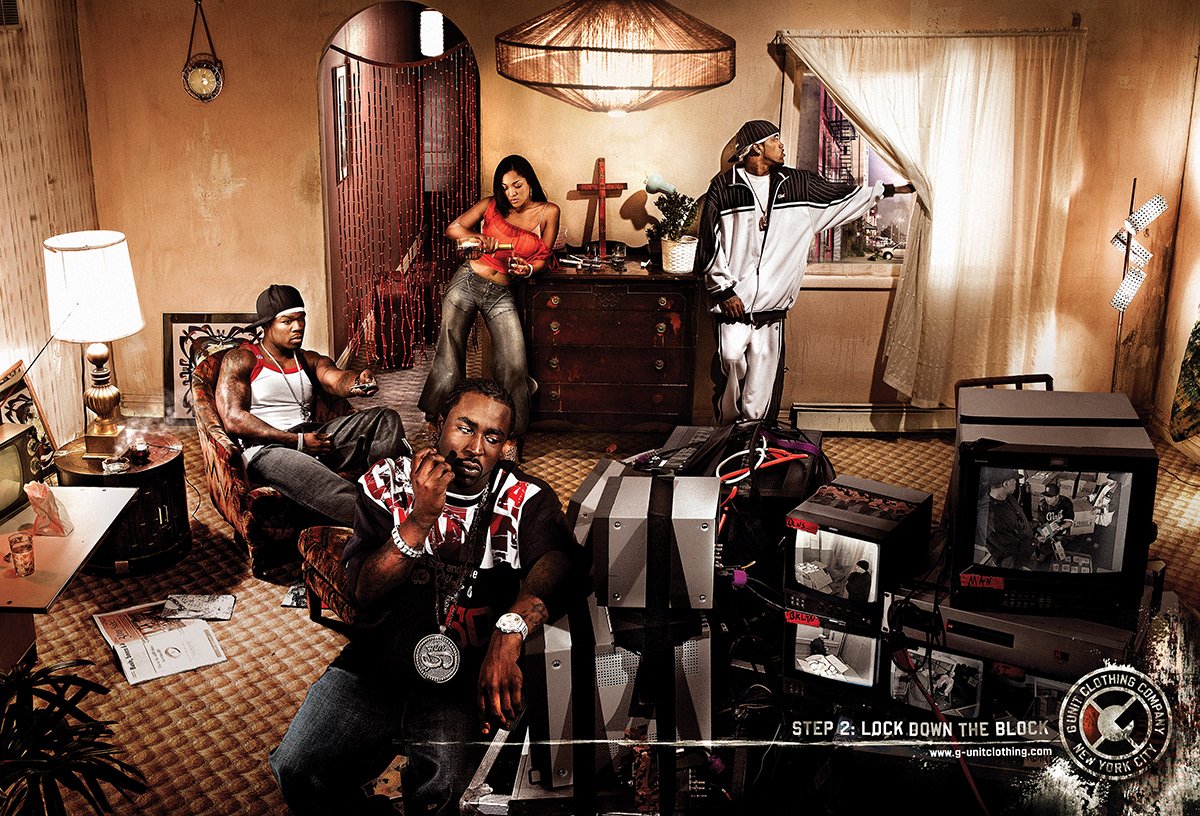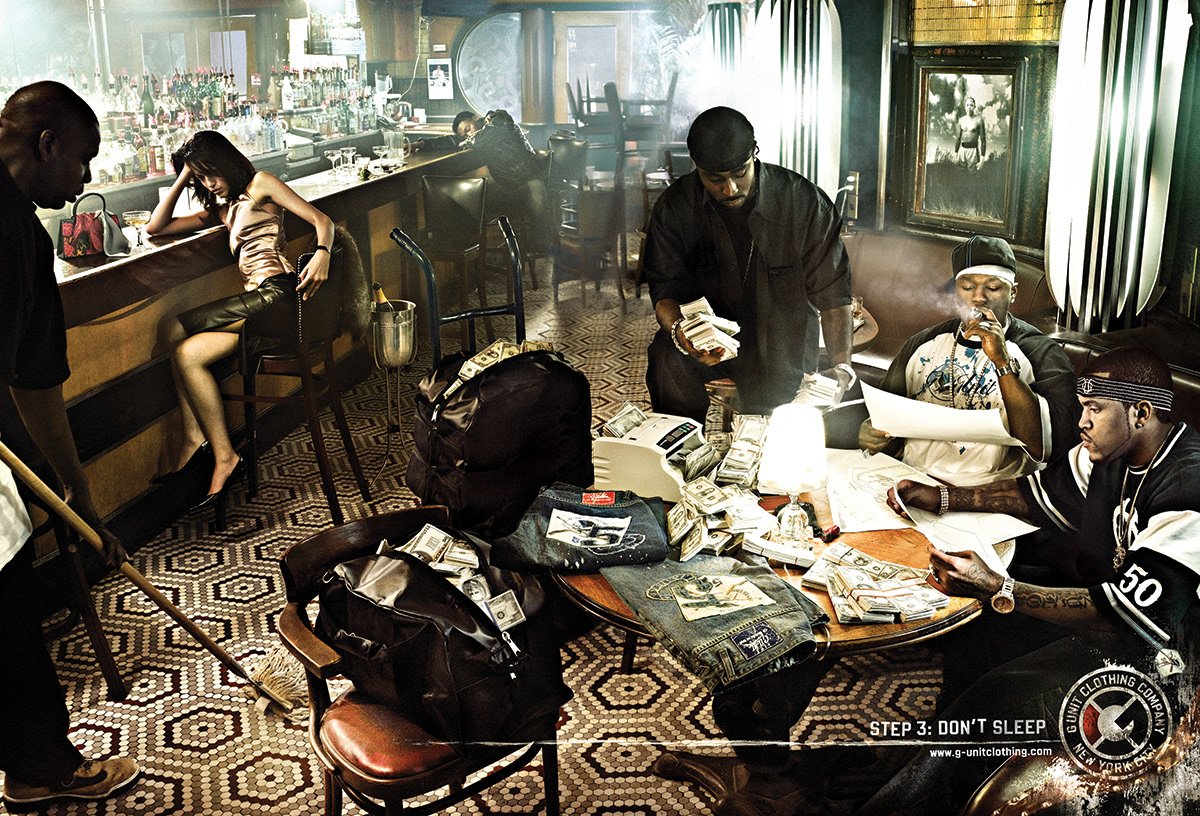50 cent's clothing line, G-Unit
History behind 50 cent’s clothing line, G-unit, and it’s movement into legacy and mentorship.
Growing up in Queens, New York, 50cent never had it easy. His mother passed away when he was 12 and he was dropped by Columbia records in 2000, and 50 cent has always maintained he was never meant to make it off the streets alive, but his attitude kept him afloat. The music he made just kept him sane, and “away from all the bullshit” he remarks on the G-unit website. While this may come off as bravado, this is a man who refuses to lose.
G-Unit, Short for “Guerilla Unit”, wasn’t only an American Hip-Hop group formed by 50 cent, but also a clothing line released in partnership with Marc Ecko in 2003. There isn’t much documented about the history of G-Unit available online. That’s why I managed to get hold of the lead art director for both the men’s and women’s campaigns, Michael Boyd.
“I vividly remember sitting with him in the office of our lead Creative Director Argee Vasquez.” He says, a director who understood the community without judgements and connected with hip-hop and street fashion culture. “My job was first to simply understand the brands roots, translate and extend it into the future seasons. I did the same as we developed the Ad campaigns for the G-Unit Women’s line.”
Michael had nothing but praise for 50 cent’s work, and his passion seems palpable, “His desire to succeed “whatever-the-cost” is what I took away most. He has a growth mindset and was always early to every photoshoot, reviewed concepts with us, and even examined CAD clothing drawings alongside myself and the design team ahead of schedule.”
50 was also known his focus on the effects of street culture on individuals in his music, and moving beyond how rappers write “about how they sold drugs and did dirt as if there were no repercussions. They don’t write about the affects of street life.” As 50 cent said himself in an interview. This attitude is reflected in his approach to the G-Unit clothing line, as Michael mentioned, “we went from stereotypical scenarios about the drug trade and moved into mentorship, legacy, brotherhood and sisterhood. These are themes that go under-appreciated when gang and gangster culture is viewed at a surface level.” He says, and “these themes exist because they ARE necessary to the survival of culture – especially among people of color.”
To some, 50cent is just another rapper. But to many, especially those who understood him, he wanted to pioneer personal and collective growth through his music and ideas. These themes are palpable in art, clothing, and persona. As Michael Boyd points out, he never took the culture at surface level, and this is reflected throughout his work. G-Unit released their final line with Marc Ecko in 2009, and is now exclusively sold online.
—
“I know this time is a test. Before, people were not expecting me to sell 10 million albums. Now, I’m proving myself all over again.”









